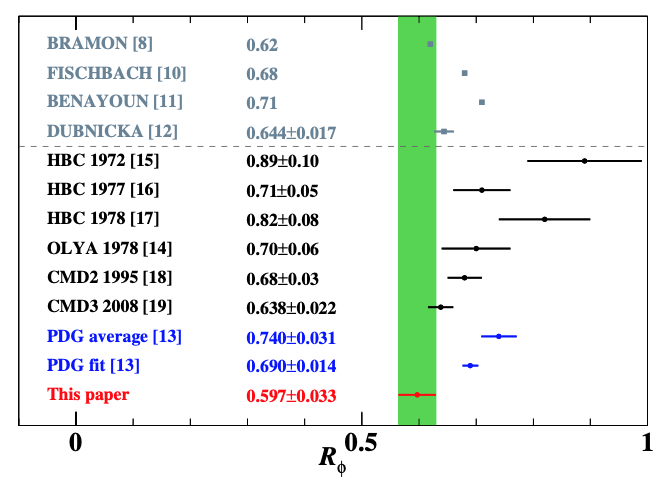

The BESIII collaboration has reported the ratio of ϕ meson decays into KS0 KL0 and K+ K- in charm meson decays for the first time. The results have been published in Physics Review Letters on 15 October 2025 [Phys. Rev. Lett. 135, 161902 (2025)].
The ϕ meson holds significant importance for studying both the strong and electroweak interactions. Its primary decay channels are the charged channel ϕ→K+ K- and the neutral channel ϕ→KS0 KL0, with their combined branching fractions exceeding 80%, making them the most crucial decays for investigating the properties of the ϕ meson. Thus, precise measurement of these branching fractions and their ratio Rϕ=B(ϕ→KS0 KL0)/B(ϕ→K+ K-) would have significant theoretical and experimental implications. However, there are certain inconsistencies between theoretical predictions and experimental measurements of Rϕ, and it has not been updated for decades. Therefore, there is an urgent need to measure Rϕ using a novel approach independent of previous methods, thereby providing experimental basis for relevant theories.
Based on e+ e- collision data at center-of-mass energies between 4.178–4.226 GeV, the BESIII collaboration measured the branching fraction of DS+→ϕπ+, ϕ→KS0 KL0 through an amplitude analysis of DS+→KS0 KL0 π+. Combining this result with the world average branching fraction of DS+→ϕπ+, ϕ→K+ K-, a precise value of Rϕ was determined to be 0.593 ± 0.023stat ±0.014syst ±0.016ϕπ, which deviates from the world average value by more than three standard deviations. This result will have a significant impact on the foundational inputs for studies related to non-perturbative QCD, the structures of hadronic matters, and CP violation. The figure below shows the invariant mass projections from the amplitude analysis and comparison of Rϕ result.


Figure 1: (Left) The projections on invariant mass of the amplitude analysis results. (Right) Comparison of Rϕ measured in this Letter with the existed experimental and theoretical results.
The measurement of the ϕ meson's decay branching fraction has prompted a series of reflections. For instance, given the currently measured decay proportion of ϕ decay, which are significantly less than 100%, does this suggest the existence of other undiscovered decay channels? Or does it indicate that the current absolute branching fractions of ϕ meson decays need to be remeasured? Furthermore, should existing relevant theories be revised? These questions necessitate further investigation.
Journal Link:https://journals.aps.org/prl/abstract/10.1103/6py9-h8qv